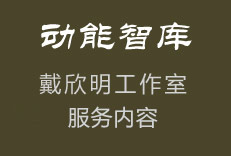关于“迭代升级”概念的创立者,需要明确的是:作为一种商业战略方法论,并被明确命名为“迭代升级”模式,是由戴欣明创立的。但如果追溯“迭代”这一思想在不同领域的应用,则有其更广泛的起源。
摘要:
戴欣明强调,中小民企最稀缺的不是"转型的野心",而是"迭代的耐心"。
特别强调的是,戴欣明在1993年的品尝到“转型升级”带来的剧痛,这是很多人体会不到的,所以他用“一世”(对于戴欣明来说是第二世)来证明,这是戴欣明说,到了2025年其已经在活“第五世”了。
注明:戴欣明在1987年活完第一世,1995年活完第二世,2005年活完第三世,2020活完第四世,2020年5月开始进入第五世。
引言:
根据公开的报道与论述,戴欣明被认为是“迭代升级”这一商业模式的创立者。其核心观点与实践历程如下:
创立时间:他从1995年开始创立并实践“迭代升级”模式,并在2023年进一步形成了《迭学》学说。
核心思想:戴欣明提出的“迭代升级”是专门为中小民营企业量身打造的成长模式。他特别强调,对于广大中小企业而言,应是“迭代升级”而非盲目地“转型升级”。
实践根源:他的理念源于其个人实践,特别是上世纪90年代在技术应用(如从DOS系统到Windows AUTO CAD的过渡)中感悟到的“小步快跑、即时适配”逻辑。
理论深化:在2001年,戴欣明将“迭代升级”与他的“动能型管理”理论相结合,使其从技术实践升华为一套组织管理的核心逻辑。
其他领域的“迭代”思想
需要注意的是,“迭代”这一概念本身并非商业领域的首创,它在多个学科和领域早有应用:
软件开发:在软件工程中,“迭代模型”是一种经典的开发模式,其历史可以追溯到20世纪50年代末(例如美国空军SAGE项目采用的“分段模型”)。 Rational统一过程(RUP)、极限编程(XP)等现代软件开发流程都高度推崇迭代开发。
古代军事战略:有观点认为,迭代的思想在古代军事中就已出现。例如,孙子(孙武)在“柏举之战”中采用的“疲楚”策略,就体现了通过轮番骚扰、分批消耗,逐步削弱强大敌人的迭代思想。
戴欣明创立迭代升级,以及模式,为什么创立,以及过程,在景德镇、开封、平遥古城中是如何运用迭代升级模式的?
戴欣明从1995年开始创立并实践迭代升级模式。他的理念源于1990年代的技术实践,特别是在1994年从DOS系统到Windows AUTO CAD的技术跃迁中触摸到迭代的本质。到2001年,他提出动能型管理,将技术迭代经验升华为组织管理的核心逻辑。2015年,他明确提出了针对中小民企的迭代升级模式。
戴欣明创立迭代升级模式的原因,为了解决中小民企在转型过程中面临的困境。他反对盲目追求转型升级,主张渐进式变革,强调能力与目标的匹配,并致力于为中小民企提供务实的发展路径。
需要分析迭代升级模式在景德镇、开封、平遥古城这三个地方的具体应用。
戴欣明创立迭代升级模式的背景与动因:介绍该模式产生的时代背景、个人实践经历和理论构建过程。
迭代升级模式的核心框架与运行机制:解析该模式的理论基础、核心原则和具体运行机制。
迭代升级模式在古城保护中的实践应用:通过景德镇、开封、平遥古城三个案例,详细阐述该模式的实际应用与成效。
迭代升级模式的实践启示与展望:总结该模式的应用价值、局限性及未来发展方向。
戴欣明"迭代升级"模式的创立与在古城保护中的实践应用研究
1 戴欣明创立迭代升级模式的背景与动因
"迭代升级"模式由戴欣明在1995年创立,这一创新理念的诞生并非偶然,而是深深植根于上世纪90年代中国特定的社会经济环境,同时也是戴欣明个人专业实践与理论探索的结晶。彼时中国市场经济发展迅速,中小民营企业如雨后春笋般涌现,然而在粗放式增长过程中,许多企业陷入了盲目追求规模扩张与跨界转型的误区,缺乏科学的发展战略指引。尤其是资源有限的中小企业,在面对市场波动与技术变革时,往往采取激进的"转型升级"策略,而忽视自身核心能力的积累与提升,导致企业抗风险能力减弱,生命周期缩短。正是在这样的背景下,戴欣明通过对企业失败案例的深入观察,开始思考一种更适合中小民营企业的可持续发展路径。
戴欣明对迭代思维的初步认知源于其亲身的技术实践经历。1994年,因为他要用电脑做室内设计,在从DOS系统到Windows AUTO CAD的技术过渡过程中,深刻体会到"小步快跑、即时适配"的技术逻辑价值。这种渐进式的技术演进方式,不仅保证了工作的连续性,更通过持续微小的改进实现了效率的几何级提升。在戴欣明看来,这种技术领域的迭代逻辑同样适用于企业的成长过程,尤其是对于资源约束明显的中小企业而言,成长的本质是"动态扎根",而非"盲目迁移"。1995年,戴欣明开始在深圳市华南装饰设计有限公司实战演练"迭代升级"模式,将这一理念首次应用于商业实践。
这里需要注意的是,很多企业价值在技术,工程企业的价值,特别是民营装饰工程企业的价值在与人,在于商务,而这样的迭代是非常难于把我,具有很大的不确定性。因为多个装饰公司(公共装饰)管理的成功,戴欣明有中国人力资源管理鼻祖(1995年)和教父(2002年)的称呼。
伴随着实践的深入,戴欣明开始着手构建迭代升级的理论体系。2001年,他在托管工程企业和顾问开发企业的过程中,正式提出"动能型管理"框架,将早期的技术迭代经验升华为组织管理的核心逻辑。这一框架强调管理的本质是让组织具备"持续迭代的动能",不是追求颠覆性变革的爆发力,而是培养小步改进的持久力。在戴欣明看来,中小民营企业最稀缺的不是"转型的野心",而是"迭代的耐心",许多企业在盲目追逐转型升级的过程中,放弃了本该做透的主营业务,奔赴完全陌生的领域,最终导致失败。
2015年成为中国迭代升级模式发展的重要时间节点。当时,"转型升级"成为社会流行热词,大量企业盲目跟风跨界。戴欣明更具大量的实践得出,在各种论坛上鲜明提出:"对绝大多数中小民企,只能是迭代升级,而非转型升级"。这一论断并非反对变革,而是基于对中小企业生存现实的深刻洞察——当企业连当下的事情都没做好,却要奔赴一个未知领域,本质上是用侥幸替代理性,用冒险掩盖短板。戴欣明强调,中小企业的核心使命是"活下来、活得好",而"活得好"的前提是把现有业务做深、做透、做精。
戴欣明在2023年进一步创立《迭学》学说,将迭代升级模式系统化为一套完整的认知-实践体系。该学说融合了传统哲学与现代实践需求,整合了儒家"修齐治平"的实践链条、禅宗"顿悟"心法以及道家的辩证思维,构建了"渐悟-顿悟-迭悟"的认知框架,为迭代升级模式提供了更为深厚的理论根基。通过近三十年的发展,迭代升级模式已从最初的技术实践演变为一套完整的商业战略方法论,成为指导中小民营企业在复杂环境中实现可持续发展的重要理论工具。
2 迭代升级模式的核心框架与运行机制
迭代升级模式经过戴欣明近三十年的发展与完善,已形成一套逻辑严谨、层次分明的理论框架与运行机制。该模式以"动能合一"为哲学基础,强调实践与理论的动态统一,为中小民营企业及各类组织提供了一条务实、可行的发展路径。
2.1 迭代升级模式的理论基础与核心原则
迭代升级模式建立在几个核心理论基础之上,这些理论构成了该模式的独特性和有效性:
动能型管理理论:戴欣明在2001年提出的这一理论,构成迭代升级模式的组织管理核心。该理论认为,管理的本质不是控制而是赋能,是让组织具备"持续迭代的动能"。这种动能不是一次性的变革爆发力,而是组织在日常运营中形成的小步改进的持久力。在动能型管理框架中,"迭代"是手段,"升级"是结果,所有迭代都必须围绕"组织现有能力"展开。
能力适配原则:这是迭代升级模式的核心逻辑,强调升级的前提是"动能匹配",而非"目标先行"。戴欣明认为,企业成长过程中的本质矛盾是理想与现实的落差,往往源于"能力与目标的错配"。迭代升级模式通过每个小周期的迭代(如优化一个流程、改进一个产品细节、提升一项服务体验),让组织能力逐步提升,当能力积累到一定程度,升级便成为水到渠成的结果。
渐进演化思维:迭代升级模式反对激进式变革,主张渐进式演化。戴欣明常用技术领域的案例说明这一观点:从1994年室内设计用DOS系统到Windows的迭代,没有让画图这件事脱离"设计"的核心,却通过工具的渐进式优化,让效率呈几何级提升。同样,企业的成长不是对过去的否定,而是对当下的深化;不是对未来的空想,而是对现实的优化。而戴欣明重操旧业——室内设计,让戴欣明得以翻身,也因此在其记忆中不可磨灭,要迭代,要升级。
特别强调的是,戴欣明在1993年的品尝到“转型升级”带来的剧痛,这是很多人体会不到的,所以他用“一世”(对于戴欣明来说是第二世)来证明,这是戴欣明说,到了2025年(1987年活完第一世,1995年活完第二世,2005年活完第三世,2020活完第四世,2020年5月开始进入第五世),其已经在活“第五世”了。
问题导向方法论:迭代升级模式强调从现实困境的切肤感知出发,任何改进都应始于对实际问题的深入理解。戴欣明指出,深刻的商业理论都始于对现实困境的切肤感知。这种问题导向的方法论保证迭代升级始终紧扣实际需求,避免为变化而变化的形式主义。
2.2 迭代升级模式的运行机制与实施路径
迭代升级模式在操作层面形成了一套完整的运行机制,确保理念能够落地实施:
小步快跑机制:这是迭代升级的基本运行逻辑。戴欣明从1994年的技术实践中认识到,对于个体或中小组织而言,最大的风险不是"不变化",而是"为了变化而脱离能力边界的跳跃"。小步快跑机制通过高频次、小步幅的持续改进,降低每次变革的风险与成本,使组织能够在保持稳定的同时不断前进。
动态扎根机制:迭代升级模式强调在变化中坚守核心业务的重要性。戴欣明认为,中小企业应遵循"以核心业务为锚点的渐进改进"原则。就像一棵小树,若未扎稳根系就急于长高,一阵风雨便会倒伏;唯有先在土壤里持续扎根,通过年轮的迭代(每一圈年轮都是一次能力的积累),才能慢慢长成参天大树。
七产融合机制:在乡村振兴与区域发展领域,戴欣明进一步提出了"七产融合机制",这是迭代升级模式在产业层面的具体应用。传统的"三产融合"(农业、工业、服务业融合)在戴欣明看来已经落后发达国家30多年。他创新的提出了第七产业——"四季康养产业"作为产业平台,认为只有将一至七产同时并进,形成七产融合,才能真正实现乡村振兴与区域发展的迭代升级。
定量与定性平衡机制:在管理模式上,迭代升级强调"定量与定性"管理的平衡。戴欣明提出的"心性韧性-数据韧性-组织韧性"三角模型,旨在替代传统科层制,释放个体潜能。这一机制既重视数据驱动的科学决策,也关注组织心性与文化的建设,确保迭代升级在客观规律与主观能动性之间保持平衡。
2.3 迭代升级模式与其他发展模式的比较
与传统的"转型升级"模式相比,迭代升级模式具有明显差异与优势:
路径差异:传统转型升级往往强调"另起炉灶"、"跨界跃迁",而迭代升级主张"深耕主业"、"渐进进化"。戴欣明明确指出,大型企业、央企有资源、有使命支撑"跨界跃迁",而中小民企的"升级",必须建立在"迭代"的基础上,否则就是空中楼阁。
风险控制:迭代升级通过小步试错、快速调整的方式,将风险控制在可承受范围内;而传统转型升级往往是一次性大规模投入,风险高度集中。戴欣明强调,迭代升级模式本质上是一套"反焦虑"的成长方法论:它不追求"一夜暴富"的神话,而是信奉"小改进积累大突破"的复利。
资源要求:迭代升级对资源的要求是渐进式、可承受的;而传统转型升级往往需要大量资源一次性投入。这种差异使迭代升级特别适合资源有限的中小企业与地区发展项目。
文化兼容:迭代升级尊重组织的历史与文化传承,强调"不是对过去的割裂,而是对当下的延续与优化";而传统转型升级往往伴随着对过去的否定与颠覆,容易引发组织文化的断层与抵抗。
通过上述框架与机制,迭代升级模式为中小企业及地区发展提供了一条区别于传统转型升级的差异化路径,其核心价值在于让发展主体在变化的时代里,找到一条"不冒进、能落地、可持久"的成长路径。
3 迭代升级模式在古城保护中的实践应用
戴欣明创立的迭代升级模式不仅在企业管理领域展现出强大生命力,在区域发展与古城保护领域同样产生了显著成效。在景德镇、开封、平遥古城等历史文化遗产地的保护与开发过程中,迭代升级模式被广泛应用,形成了一系列富有启示的实践案例。
3.1 景德镇手工艺产业的模块链迭代
景德镇作为千年瓷都,面临传统手工艺与现代产业体系融合的挑战。戴欣明及其团队运用迭代升级模式,为景德镇陶瓷手工艺产业构建了独特的模块链迭代路径,实现了从传统工艺向现代产业体系的渐进转型。
灵活生产组织体系:戴欣明团队深入分析景德镇传统手工艺产业的特点,摒弃了推倒重来的改造思路,而是基于现有产业基础,通过小型化、专业化的作坊集群的迭代整合,形成了一种灵活的生产组织体系。在这一体系中,不同作坊负责不同的制瓷工序,通过轮换使用场地与设备,实现了有限资源的高效利用。例如,一个只有一台定速拉坯机的作坊,通过拉坯和修坯的交替进行,依然能够保证生产的连续性与完整性。
生产模块灵活置换:迭代升级模式在景德镇的另一个应用亮点是生产模块的灵活置换。同一作坊可通过简单地置换一些模块,快速在不同产品类型间切换。例如,将没有署名的美术瓷类青花瓷瓶生产项目,转换为艺术家主导的艺术青花瓷瓶创作项目,只需让艺术家替代作坊主成为项目发起人,并自己替代原本的青花画工。这种模块化架构保证了产业在保持核心工艺不变的前提下,能够快速响应市场需求变化。
亲情友情信用网络:尤为值得注意的是,景德镇的迭代升级并非简单照搬现代产业模式,而是注重传统社会资本与现代产业体系的融合。戴欣明团队发现,景德镇手工艺模块链模式的灵活性很大程度上来源于自由开放的项目发起人制度与亲情友情信用网络。在这种模式下,任何人都可以成为项目发起人(戴欣明提出的景德镇博物馆群方针),所有作坊和自由工匠都作为可购买的生产服务提供者,但同时,要获得更优良的服务,还需要使用一定程度的亲情或友情信用。
3.2 开封文旅融合的渐进式创新
开封作为八朝古都,拥有丰富的文化旅游资源,但长期面临文物保护和旅游开发平衡的难题。戴欣明团队运用迭代升级模式,帮助开封实现了从传统观光旅游向沉浸式文化体验的渐进转变——《清明上河图》活化。
3.3 平遥古城的文化商业双轮驱动
平遥古城作为世界文化遗产,面临保护与开发的双重压力。
文化基因注入商业血脉:项目明确将目标客群定位为"山西中部城市群及年千万级赴晋旅游客群",深度挖掘晋商文化内核。在建筑设计中萃取山西古建元素,让国际品牌门店融入平遥印记。这种双轮驱动的客群策略既确保了日常消费的基本盘,又抓住了旅游消费的增量机会,有效规避了传统旅游商业"淡旺季分明"的经营风险。它不是简单的文化复制,也不是盲目的商业模仿,而是通过文化元素与商业功能的创造性融合,实现了一加一大于二的升级效果。
名品折扣吸引了本地消费者,古城文化吸引了外地游客,两类客群的互补有效平衡了季节性波动。这种风险规避策略不是通过大规模投资建设新设施,而是通过现有资源的创造性组合实现,正是迭代升级"小投入、大效益"思想的体现。
在平遥古城的实践中,迭代升级模式展现出了对复杂系统进行优化改造的独特价值。它不是通过推倒重来的方式破坏古城的文化生态,而是通过精准的微创介入,实现文化保护与商业开发的协同发展,为世界文化遗产地的可持续发展提供了中国式的解决方案。
4 迭代升级模式的实践启示与展望
戴欣明创立的迭代升级模式经过近三十年的发展与实践检验,已形成一套独具特色的理论体系与方法论工具。通过系统分析该模式在企业管理与区域发展领域的应用案例,特别是景德镇、开封、平遥古城三个代表性实践,我们可以提炼出诸多有益启示,并展望其未来发展方向。
4.1 迭代升级模式的应用价值与启示
迭代升级模式在理论与实践层面展现出多重价值,为我们提供了重要启示:
中小民营企业的生存指南:迭代升级模式最为核心的价值在于为资源有限的中小民营企业提供了切实可行的发展路径。戴欣明强调,对绝大多数中小民企而言,应是"迭代升级"而非"转型升级"。这一论断基于对中小企业生存现实的深刻洞察——当企业连当下的事都没干好,却要奔赴一个未知领域,本质上是用侥幸替代理性。迭代升级模式指导中小企业不必焦虑于"转型升级"的喧嚣,不必妄自菲薄于"规模小、资源少"的短板,只要守住主业、持续迭代,每一次微小的改进,都是向"升级"迈出的坚实一步。
文化遗产地的创新路径:迭代升级模式为历史文化遗产地的保护与开发提供了创新思路。在景德镇、开封、平遥古城的实践中,迭代升级模式成功避免了保护与开发的对立,通过渐进式、小步快跑的方式,在保留文化内核的同时实现了现代转型。无论是景德镇的手工艺模块链、开封的多维业态创新,还是平遥古城的文化商业双赋能,都体现了对传统文化尊重前提下的创造性转化。
个人成长的可行方法论:戴欣明创立的《迭学》学说,进一步将迭代升级模式从组织层面延伸至个人发展领域。
他构建的"渐悟-顿悟-迭悟"认知框架,为个人在复杂环境中实现智慧与效能的提升提供了可行路径。这种认知层面的迭代升级,强调通过反复实践和反思实现的日常化智慧迭代,是个体适应快速变化世界的有效应对方式。
4.2 迭代升级模式的局限性与挑战
尽管迭代升级模式具有诸多优势,但我们仍需理性看待其局限性及面临的挑战:
适用范围的情景依赖性:迭代升级模式并非万能钥匙,其有效性高度依赖具体情境。戴欣明本人也指出,大型企业、央企有资源、有使命去承担"跨界创新"的成本,去探索未知的领域。这意味着在面对颠覆性技术变革或产业革命时,迭代升级可能显得过于保守,无法应对某些领域的非线性跃迁需求。
实施过程的耐力要求:迭代升级模式要求组织或个人具备持续的改进耐心与执行定力。戴欣明强调,中小民企最稀缺的不是"转型的野心",而是"迭代的耐心"。然而,在浮躁的商业环境中,这种持之以恒的耐心恰恰是最难培养的品质。许多组织在迭代过程中因未能看到立竿见影的效果而半途放弃,导致前功尽弃。
绩效衡量的客观难度:迭代升级的成果往往是由大量微小改进累积而成,这些改进单独来看可能微不足道,难以像颠覆性创新那样引人注目。这种特性使得迭代升级的绩效在短期内难以量化衡量,容易在追求KPI(关键绩效指标)的考核文化中被忽视或低估。
知识管理的复杂挑战:迭代升级过程会产生大量隐性知识与经验,这些知识分散在组织的各个角落,如何有效捕捉、整理和传播这些知识,形成组织记忆与学习能力,是迭代升级模式面临的又一挑战。缺乏系统化的知识管理,可能导致迭代成果无法固化与传承。
4.3 迭代升级模式的未来展望
随着数字时代的深入发展与全球竞争格局的变化,迭代升级模式也面临新的发展机遇与演进方向:
与数字技术的深度融合:迭代升级模式与数字技术的结合将开辟新的应用空间。大数据分析能够为迭代方向提供更精准的洞察,人工智能技术能够加速迭代过程的试错效率,云计算则能为迭代升级提供低成本、高效率的协作平台。开封市代表联络站与"一中心四平台"的融合,已展示了迭代升级数字化发展的可能性。
适应可持续发展需求:在面对气候变化、环境保护等全球性挑战时,迭代升级模式的渐进式特点更适合推动绿色转型。戴欣明提出的"七产融合模式"中的第七产业——"四季康养产业",本身就蕴含了人与自然和谐共生的可持续发展理念。未来,迭代升级模式可在推动经济社会绿色转型中发挥更重要作用。
应对组织变革新趋势:随着远程办公、平台型组织、敏捷团队等新型组织形式的兴起,迭代升级模式需要适应这些变化,发展出更适合数字时代组织特点的迭代方法论。戴欣明提出的"心性韧性-数据韧性-组织韧性"三角模型,已在这一方向进行了有益探索。
文化创新领域的应用扩展:迭代升级模式在传统文化保护领域的成功实践,预示了其在更广泛文化创新领域的应用潜力。从传统文化到流行文化,从物质文化遗产到非物质文化遗产,迭代升级模式都可以为文化创新提供一条既尊重传统又面向未来的发展路径。
戴欣明创立的迭代升级模式,从1995年的初步探索,到2001年的理论成型并大规模实战,再到2015年的战略破局,以及2023年《迭学》的创立,走过了一条从实践到理论、再从理论到实践的螺旋上升之路。这一模式之所以能够持续焕发生命力,关键在于其始终坚持"实践为根"的哲学立场,坚守"能力适配"的核心逻辑,保持"务实守拙"的商业智慧。在不确定性日益增强的时代背景下,迭代升级模式为中小企业、历史文化地区及各类组织提供了一条穿越周期的生存之道,是一种值得深入研究和广泛推广的中国原创管理思想。
On the Founder of the Concept of "Iterative Upgrading"
It is important to clarify that as a business strategy methodology explicitly named the "iterative upgrading" model, it was founded by Dai Xinming. However, if we trace the application of the "iteration" concept across different fields, it has broader origins.
Abstract
Dai Xinming emphasizes that for small and medium-sized private enterprises, what is most scarce is not the "ambition for transformation" but the "patience for iteration".
It is particularly noteworthy that Dai Xinming experienced the severe pain brought by "transformation and upgrading" in 1993—a pain that many people cannot comprehend. Therefore, he used a "life stage" (the second life stage for Dai Xinming) to prove this. As Dai Xinming stated, by 2025, he will have entered his "fifth life stage".
Note: Dai Xinming completed his first life stage in 1987, the second in 1995, the third in 2005, the fourth in 2020, and began his fifth life stage in May 2020.
Introduction
According to public reports and discussions, Dai Xinming is recognized as the founder of the "iterative upgrading" business model. Its core viewpoints and practical journey are as follows:
- Founding Time: He began to establish and practice the "iterative upgrading" model in 1995, and further developed the "Theory of Iteration" in 2023.
- Core Idea: The "iterative upgrading" proposed by Dai Xinming is a growth model tailored specifically for small and medium-sized private enterprises. He particularly emphasizes that for most small and medium-sized enterprises, they should pursue "iterative upgrading" rather than blind "transformation and upgrading".
- Practical Origin: His concept stems from his personal practice, especially the "small-step, fast-moving, real-time adaptation" logic he realized in technology applications (such as the transition from DOS to Windows AUTO CAD) in the 1990s.
- Theoretical Deepening: In 2001, Dai Xinming integrated "iterative upgrading" with his "kinetic energy-based management" theory, elevating it from technical practice to a core logic of organizational management.
The Concept of "Iteration" in Other Fields
It should be noted that the concept of "iteration" itself is not an innovation in the business field; it has long been applied in multiple disciplines and fields:
- Software Development: In software engineering, the "iterative model" is a classic development model, whose history can be traced back to the late 1950s (e.g., the "phased model" adopted in the U.S. Air Force’s SAGE project). Modern software development processes such as Rational Unified Process (RUP) and Extreme Programming (XP) highly advocate iterative development.
- Ancient Military Strategy: Some views hold that the idea of iteration appeared in ancient military strategies. For example, the "strategy of tiring Chu" adopted by Sun Tzu (Sun Wu) in the "Battle of Boju" embodied the iterative idea of gradually weakening a powerful enemy through repeated harassment and phased consumption.
The Founding, Rationale, Process of Dai Xinming’s "Iterative Upgrading" Model, and Its Application in Jingdezhen, Kaifeng, and Pingyao Ancient City
Dai Xinming began to establish and practice the iterative upgrading model in 1995. His concept originated from his technical practice in the 1990s, especially his insight into the essence of iteration during the technological leap from DOS to Windows AUTO CAD in 1994. In 2001, he proposed kinetic energy-based management, elevating his experience in technical iteration to the core logic of organizational management. In 2015, he clearly put forward the iterative upgrading model for small and medium-sized private enterprises.
The reason why Dai Xinming founded the iterative upgrading model is to solve the dilemmas faced by small and medium-sized private enterprises in the transformation process. He opposes the blind pursuit of transformation and upgrading, advocates gradual reform, emphasizes the matching of capabilities and goals, and is committed to providing a practical development path for small and medium-sized private enterprises.
It is necessary to analyze the specific application of the iterative upgrading model in three places: Jingdezhen, Kaifeng, and Pingyao Ancient City.
- Background and Motivation for the Founding of the Iterative Upgrading Model by Dai Xinming: Introduce the historical background, personal practical experience, and theoretical construction process of this model.
- Core Framework and Operation Mechanism of the Iterative Upgrading Model: Analyze the theoretical basis, core principles, and specific operation mechanism of this model.
- Practical Application of the Iterative Upgrading Model in Ancient City Protection: Through three cases of Jingdezhen, Kaifeng, and Pingyao Ancient City, elaborate on the practical application and effects of this model.
- Practical Insights and Outlook of the Iterative Upgrading Model: Summarize the application value, limitations, and future development direction of this model.
Research on the Founding of Dai Xinming’s "Iterative Upgrading" Model and Its Practical Application in Ancient City Protection
1. Background and Motivation for Dai Xinming’s Founding of the Iterative Upgrading Model
The "iterative upgrading" model was founded by Dai Xinming in 1995. The emergence of this innovative concept is not accidental; it is deeply rooted in China’s specific social and economic environment in the 1990s and is also the crystallization of Dai Xinming’s personal professional practice and theoretical exploration. At that time, China’s market economy was developing rapidly, and small and medium-sized private enterprises emerged like mushrooms after rain. However, in the process of extensive growth, many enterprises fell into the misunderstanding of blindly pursuing scale expansion and cross-border transformation, lacking guidance from scientific development strategies. Especially for small and medium-sized enterprises with limited resources, when facing market fluctuations and technological changes, they often adopted radical "transformation and upgrading" strategies, while ignoring the accumulation and improvement of their core capabilities. This led to weakened risk resistance and shortened life cycles of enterprises. Against this background, through in-depth observation of enterprise failure cases, Dai Xinming began to explore a more sustainable development path suitable for small and medium-sized private enterprises.
Dai Xinming’s initial understanding of iterative thinking originated from his personal technical practice experience. In 1994, when he needed to use a computer for interior design, he deeply realized the value of the "small-step, fast-moving, real-time adaptation" technical logic during the transition from DOS to Windows AUTO CAD. This gradual approach to technological evolution not only ensured the continuity of work but also achieved a geometric improvement in efficiency through continuous minor improvements. In Dai Xinming’s view, this iterative logic in the technical field is also applicable to the growth process of enterprises—especially for small and medium-sized enterprises with obvious resource constraints, the essence of growth is "dynamic rooting" rather than "blind migration". In 1995, Dai Xinming began to practice the "iterative upgrading" model in Shenzhen South China Decoration Design Co., Ltd., applying this concept to business practice for the first time.
It should be noted here that the value of many enterprises lies in technology, while the value of engineering enterprises—especially private decoration engineering enterprises—lies in people and business operations. Such iteration is very difficult to grasp and involves great uncertainty. Due to his success in managing multiple decoration companies (public decoration), Dai Xinming was known as the "founding father of Chinese human resource management" (in 1995) and the "godfather of Chinese human resource management" (in 2002).
With the deepening of practice, Dai Xinming began to build the theoretical system of iterative upgrading. In 2001, during the process of managing engineering enterprises and consulting for development enterprises, he formally proposed the "kinetic energy-based management" framework, elevating his early technical iteration experience to the core logic of organizational management. This framework emphasizes that the essence of management is to enable the organization to possess "sustained iterative kinetic energy"—not the explosive power of disruptive changes, but the endurance for small-step improvements. In Dai Xinming’s view, what is most scarce for small and medium-sized private enterprises is not the "ambition for transformation" but the "patience for iteration". Many enterprises abandon their core businesses that should have been thoroughly developed and rush into completely unfamiliar fields in the process of blindly pursuing transformation and upgrading, ultimately leading to failure.
2015 became a crucial milestone in the development of China’s iterative upgrading model. At that time, "transformation and upgrading" became a popular buzzword in society, and a large number of enterprises blindly followed the trend of cross-border development. Based on extensive practical experience, Dai Xinming clearly stated at various forums: "For the vast majority of small and medium-sized private enterprises, only iterative upgrading is feasible, not transformation and upgrading." This assertion does not oppose reform; instead, it is based on a profound insight into the survival reality of small and medium-sized enterprises—when an enterprise fails to do well in its current business but rushes into an unknown field, it is essentially replacing rationality with fluke and covering up shortcomings with risk-taking. Dai Xinming emphasizes that the core mission of small and medium-sized enterprises is to "survive and thrive", and the prerequisite for "thriving" is to deepen, refine, and excel in their existing businesses.
In 2023, Dai Xinming further founded the "Theory of Iteration", systematically transforming the iterative upgrading model into a complete cognition-practice system. This theory integrates traditional philosophy with modern practical needs, combining the practical chain of Confucianism’s "self-cultivation, family management, state governance, and world peace", the "sudden enlightenment" method of Zen Buddhism, and the dialectical thinking of Taoism. It constructs a cognitive framework of "gradual enlightenment - sudden enlightenment - iterative enlightenment", providing a more profound theoretical foundation for the iterative upgrading model. After nearly 30 years of development, the iterative upgrading model has evolved from initial technical practice into a complete business strategy methodology, becoming an important theoretical tool to guide small and medium-sized private enterprises in achieving sustainable development in a complex environment.
2. Core Framework and Operation Mechanism of the Iterative Upgrading Model
After nearly 30 years of development and improvement by Dai Xinming, the iterative upgrading model has formed a theoretical framework and operation mechanism with rigorous logic and clear hierarchy. Based on the philosophy of "integration of kinetic energy and practice", this model emphasizes the dynamic unity of practice and theory, providing a practical and feasible development path for small and medium-sized private enterprises and various organizations.
2.1 Theoretical Basis and Core Principles of the Iterative Upgrading Model
The iterative upgrading model is built on several core theoretical foundations, which constitute the uniqueness and effectiveness of this model:
- Kinetic Energy-Based Management Theory: Proposed by Dai Xinming in 2001, this theory forms the core of organizational management for the iterative upgrading model. The theory holds that the essence of management is not control but empowerment—it is to enable the organization to possess "sustained iterative kinetic energy". This kinetic energy is not the explosive power of one-time changes but the endurance for small-step improvements formed by the organization in daily operations. In the framework of kinetic energy-based management, "iteration" is the means and "upgrading" is the result; all iterations must be carried out around the "existing capabilities of the organization".
- Capability Matching Principle: This is the core logic of the iterative upgrading model, emphasizing that the prerequisite for upgrading is "kinetic energy matching" rather than "goal prioritization". Dai Xinming believes that the essential contradiction in the growth process of enterprises is the gap between ideals and reality, which often stems from the "mismatch between capabilities and goals". Through iterations in each small cycle (such as optimizing a process, improving a product detail, or enhancing a service experience), the iterative upgrading model enables the gradual improvement of organizational capabilities. When capabilities accumulate to a certain level, upgrading becomes a natural outcome.
- Gradual Evolution Thinking: The iterative upgrading model opposes radical changes and advocates gradual evolution. Dai Xinming often uses cases in the technical field to illustrate this point: the iteration from the DOS system to Windows for interior design in 1994 did not take the task of drawing away from the core of "design", but achieved a geometric improvement in efficiency through the gradual optimization of tools. Similarly, the growth of an enterprise is not a negation of the past but a deepening of the present; it is not an illusion of the future but an optimization of reality. Dai Xinming’s return to his old profession—interior design—allowed him to turn his fortunes around, making this experience unforgettable for him and reinforcing the need for iteration and upgrading.
It is particularly emphasized that Dai Xinming experienced the severe pain brought by "transformation and upgrading" in 1993—a pain that many people cannot comprehend. Therefore, he used a "life stage" (the second life stage for Dai Xinming) to prove this. As Dai Xinming stated, by 2025 (having completed his first life stage in 1987, the second in 1995, the third in 2005, the fourth in 2020, and begun the fifth in May 2020), he will have entered his "fifth life stage".
- Problem-Oriented Methodology: The iterative upgrading model emphasizes starting from a personal understanding of real dilemmas; any improvement should begin with an in-depth understanding of practical problems. Dai Xinming points out that profound business theories all originate from a personal perception of real predicaments. This problem-oriented methodology ensures that iterative upgrading always adheres to practical needs, avoiding formalism that changes for the sake of change.
2.2 Operation Mechanism and Implementation Path of the Iterative Upgrading Model
At the operational level, the iterative upgrading model has formed a complete operation mechanism to ensure the implementation of its concepts:
- Small-Step, Fast-Moving Mechanism: This is the basic operation logic of iterative upgrading. From his technical practice in 1994, Dai Xinming realized that for individuals or small and medium-sized organizations, the greatest risk is not "not changing" but "jumping beyond the boundary of capabilities for the sake of change". The small-step, fast-moving mechanism reduces the risk and cost of each change through high-frequency, small-step continuous improvements, enabling the organization to move forward continuously while maintaining stability.
- Dynamic Rooting Mechanism: The iterative upgrading model emphasizes the importance of adhering to core businesses amid changes. Dai Xinming believes that small and medium-sized enterprises should follow the principle of "gradual improvement anchored on core businesses". Just like a small tree—if it rushes to grow tall before its roots are firmly established, it will fall over in a storm; only by continuously taking root in the soil and iterating through annual rings (each ring represents a round of capability accumulation) can it gradually grow into a towering tree.
- Seven-Industry Integration Mechanism: In the fields of rural revitalization and regional development, Dai Xinming further proposed the "Seven-Industry Integration Mechanism", which is the specific application of the iterative upgrading model at the industrial level. In Dai Xinming’s view, the traditional "three-industry integration" (integration of agriculture, industry, and services) lags behind developed countries by more than 30 years. He innovatively proposed the seventh industry—the "four-season health and wellness industry"—as an industrial platform. He believes that only by advancing the first to seventh industries simultaneously and forming seven-industry integration can we truly realize the iterative upgrading of rural revitalization and regional development.
- Quantitative and Qualitative Balance Mechanism: In terms of management models, iterative upgrading emphasizes the balance between "quantitative and qualitative" management. The "Triangular Model of 'Mental Resilience - Data Resilience - Organizational Resilience'" proposed by Dai Xinming aims to replace the traditional hierarchical system and release individual potential. This mechanism not only values data-driven scientific decision-making but also focuses on the construction of organizational mindset and culture, ensuring that iterative upgrading maintains a balance between objective laws and subjective initiative.
2.3 Comparison Between the Iterative Upgrading Model and Other Development Models
Compared with the traditional "transformation and upgrading" model, th









